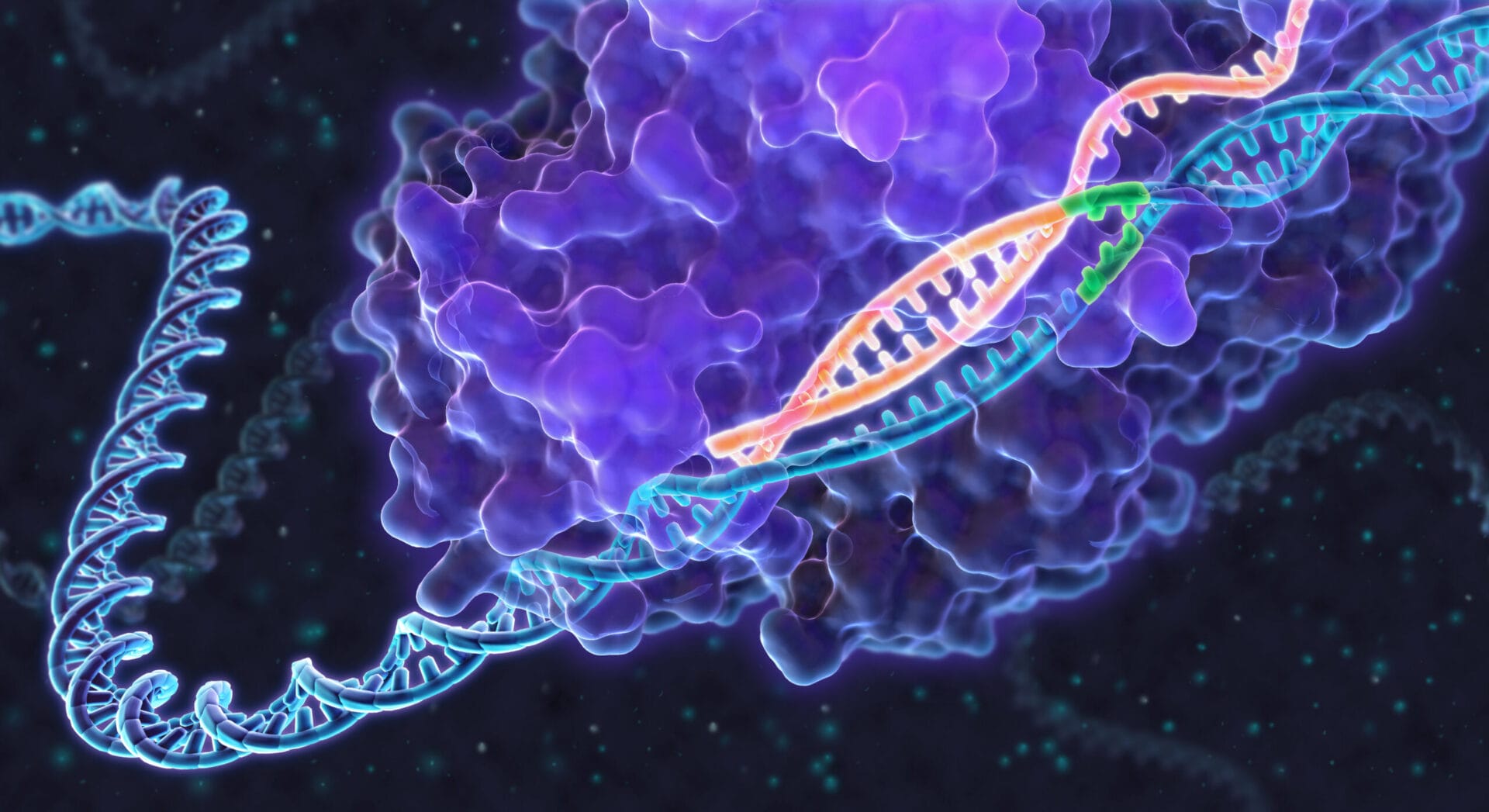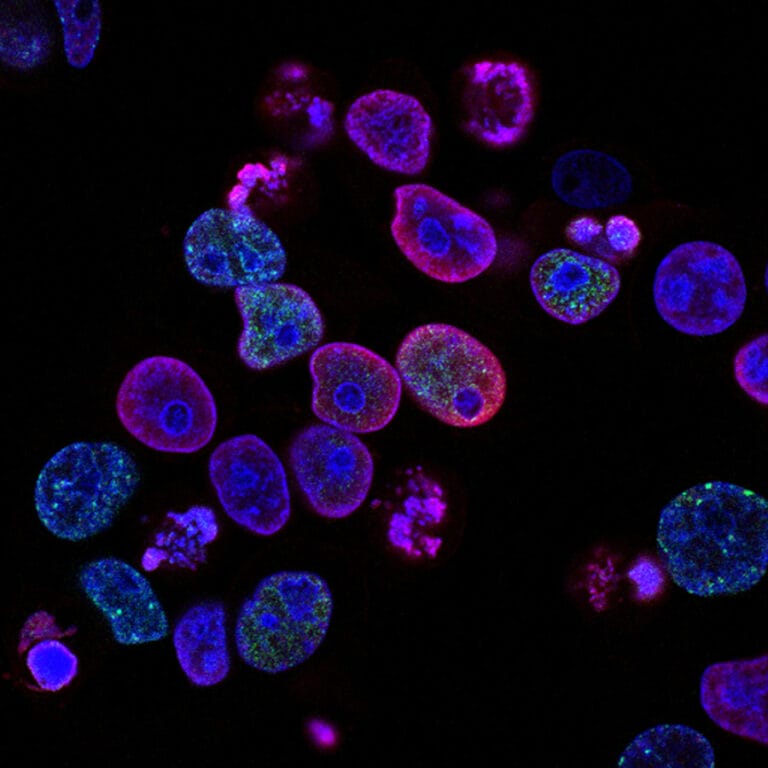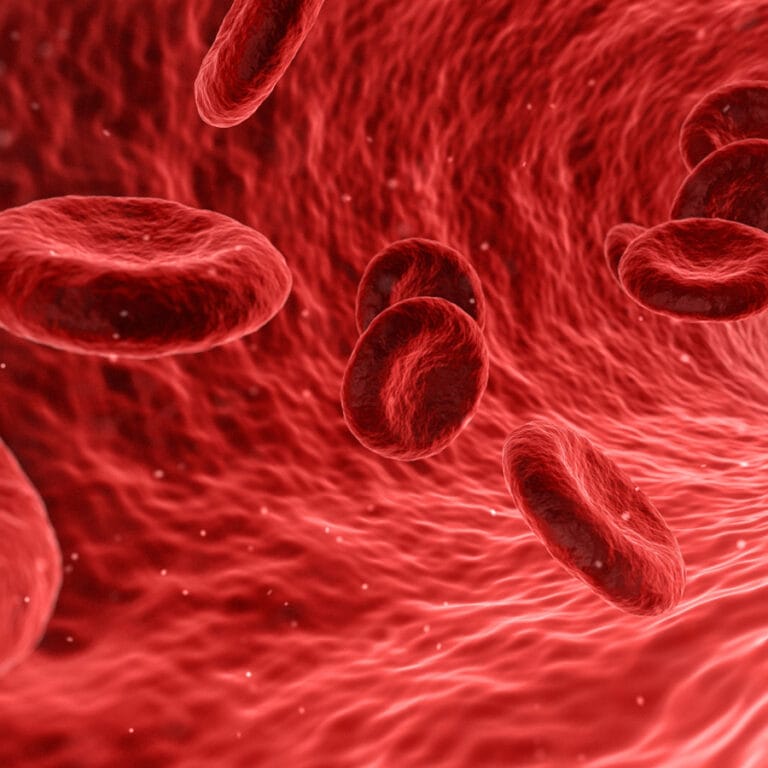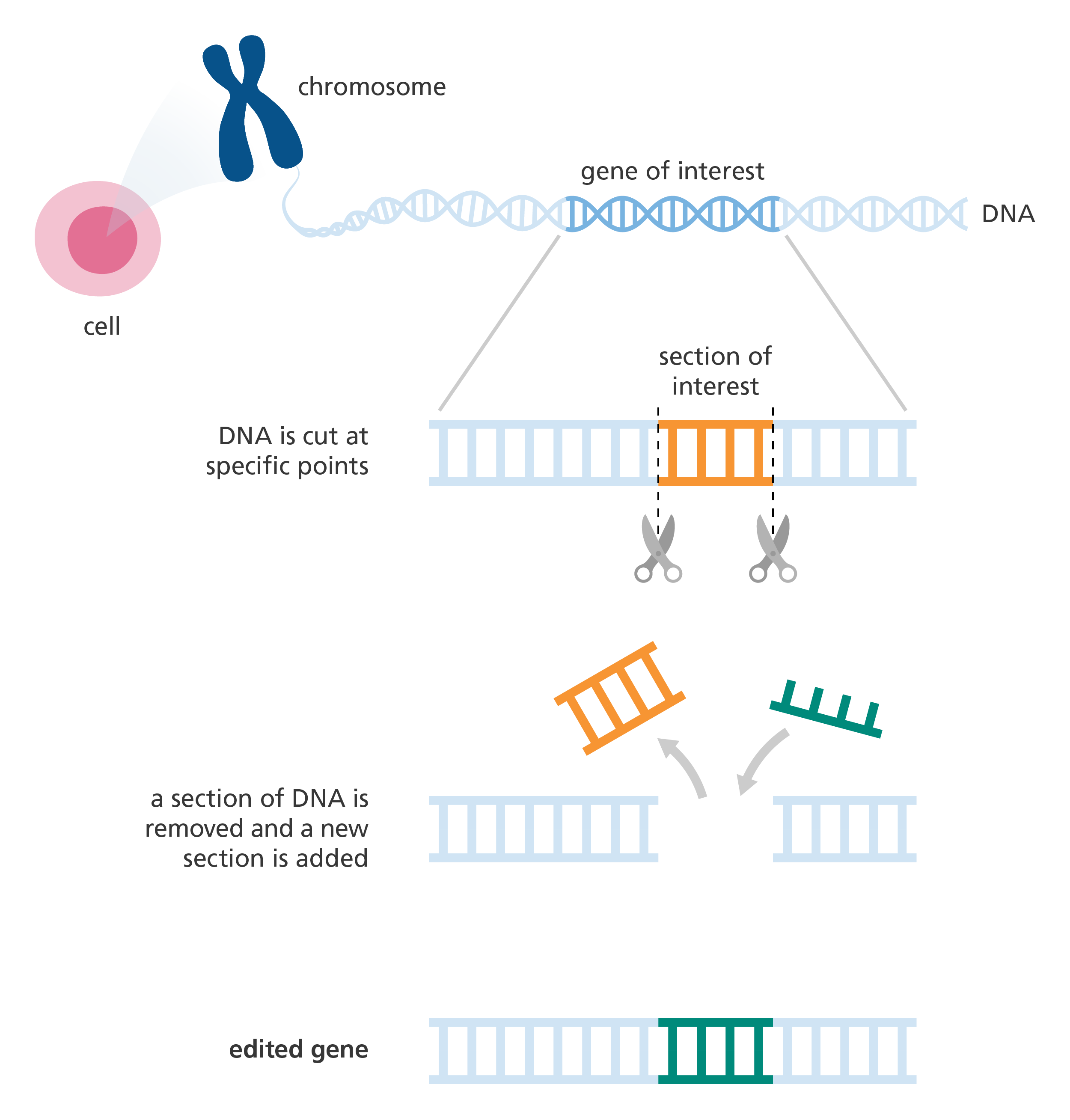What is genome editing?
A conceptual illustration of genome editing using clustered regularly interspaced short palindromic repeats (CRISPR). In order to edit a genetic sequence, a Cas9 protein (purple) attaches to the DNA of a cell using a guide RNA (orange) that matches a target DNA sequence, and separates the double helix. A protospacer adjacent motif (PAM) sequence on the cell's DNA (green) indicates where the Cas9 protein locks down and cuts the target DNA. Once the sequence has been cut, the DNA can be disabled or altered.

Genome editing is a way of making specific changes to a cell or organism’s DNA – such as adding, removing or altering the DNA sequence. This can be used to change the cell or organism’s characteristics.
- Genome editing is a technique used to modify a cell’s DNA precisely and efficiently.
- It uses enzymes to target and make changes to specific regions of DNA – such as small edits to the sequence or adding or removing sections of DNA.
- By editing the genome, the characteristics of a cell or an organism can be change.
What is genome editing used for?

For research:
Genome editing can be used to change the DNA in cells or organisms to understand their biology and how they work.

To treat disease:
Genome editing has been used to modify human blood cells that can be put back into the body to treat conditions including blood cancers and AIDS. It could potentially be used to treat infections (such as MRSA) and simple genetic conditions (such as muscular dystrophy and haemophilia).

For biotechnology:
Genome editing has been used to modify agricultural crops to improve their yields and resistance to disease and drought. It has also been used to genetically modify dairy cattle so they don’t have horns, which can cause injuries.

Illustration of genome editing. Genes are made of DNA, and that DNA is stored inside each cell. First, DNA is cut at specific points. Then, a section of DNA is removed and a new section is added. Image credit: Laura Olivares Boldú / Wellcome Connecting Science
The law surrounding genome editing in human embryos
- Genome editing could potentially be used on human embryos to prevent genetic conditions being passed to the next generation.
- In the UK, and most countries worldwide, it’s illegal to use genome editing in human embryos that are allowed to develop beyond 14 days, or that could lead to pregnancy.
- In 2022, we hosted a Citizen’s Jury with people affected by hereditary diseases to explore whether the law should be changed to allow the intentional editing of human embryos.
- The jury voted in favour of asking the UK government to consider changing the law to allow genome editing of human embryos to treat serious genetic conditions. You can read more about this here.